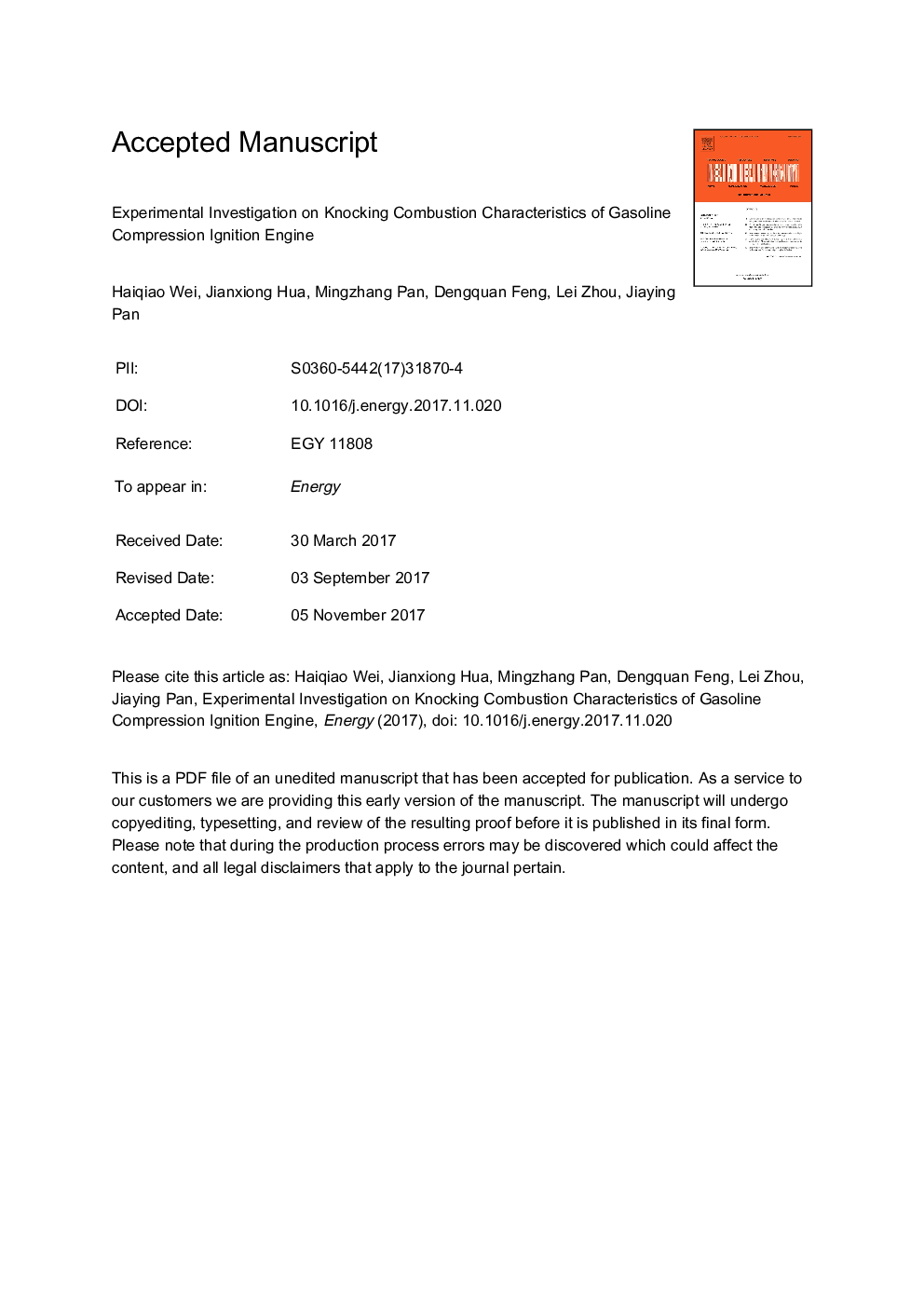| Article ID | Journal | Published Year | Pages | File Type |
|---|---|---|---|---|
| 8072440 | Energy | 2018 | 37 Pages |
Abstract
Gasoline compression ignition (GCI) is one of the most promising combustion concepts to maintain low pollutant emissions and high efficiency. However, knock phenomenon is an obstacle to GCI combustion. In this paper, experimental investigation is conducted to study GCI knocking characteristics. Firstly, analysis of engine performance and knocking trends was conducted, which shows an increasing trend of both brake mean effective pressure (BMEP) and knock intensity as injection timing advances. Secondly, comparison of knocking characteristics between the modes of spark-ignition (SI) and GCI was performed. The results of statistical and heat release analysis show that the combustion process of the two combustion modes are quite different. Knock in SI engine is a random phenomenon caused by auto-ignition of end gas. On the contrast, knock in GCI engine is ascribed to local rapid burning rate, which doesn't happens randomly. Finally, double-injection strategy is applied to obtain different mixture in premixed degree. With more fuel pilot injecting into cylinder, higher BMEP and knock intensity can be observed. The results shall give insights into the possibilities of getting better engine performance while controlling cycle-to-cycle variations and knock intensity in acceptable regions.
Related Topics
Physical Sciences and Engineering
Energy
Energy (General)
Authors
Haiqiao Wei, Jianxiong Hua, Mingzhang Pan, Dengquan Feng, Lei Zhou, Jiaying Pan,
